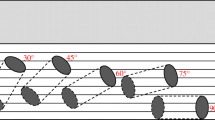Abstract
In deepwater drilling, the subsea wellhead is in a complicated stress state and carries the risk of instability. The mechanical stability of subsea wellhead has gradually become one of the key factors in the design and construction of deepwater drilling. In this paper, through the analysis of stress and deformation of subsea wellhead system in deepwater drilling, the characteristic parameters that characterize the mechanical stability of subsea wellhead were determined. On this basis, the influence of different factors on characteristic parameters was analyzed based on dimensionless processing and sensitivity analysis. Factors that were more sensitive and had greater impact on the wellhead mechanical stability of the instance well were screened. Aiming at the problem of greater uncertainty of resistance coefficient, the risk assessment method of subsea wellhead instability considering of uncertain factors was established. Using this method, the wellhead instability risks could be quantitatively evaluated in the drilling process, construction parameters and monitoring values of environmental loads which meet the wellhead safety requirements that could also be proposed. Example shows that: according to the selected parameters such as center value of drag coefficient \(\mu = 0.8\), fluctuation coefficient of drag coefficient \(\sigma = 0.05\), safety limit of subsea wellhead displacement \(S_{\mathrm{wm}} = 0.37\,\hbox {m}\), and safety limit of subsea wellhead deflection angle \(\theta _{\mathrm{wm}} = 3.1{^{\circ }}\), there was 24% probability of occurrence of wellhead instability for the target well. Meanwhile, the platform drift \(S_{\mathrm{w}}\) should be < 43 m, and the maximum marine current velocity \(u_{\mathrm{w}}\) should be < 1.188 m s\(^{-1}\).
Similar content being viewed by others
References
Zhichuan, G.; Kanhua, S.; Yinao, S.U.: Analysis on lateral load-bearing capacity of conductor and surface casing for deepwater drilling. Acta Petrol. Sin. 30(2), 285–290 (2009)
Shaughnessy, J.M.; Daugherty, W.T.; Graff, R.L. et al.: More ultradeepwater drilling problems. In: SPE 105792 (2007)
Stahl, B.; Baur, M.P.: Design methodology for offshore platform conductors. J. Petrol. Technol. 35(12(12)), 1973–1984 (1983)
King, G.W.; Kevin, D.; Trevor, H.: A coupled analysis approach to the assessment of marine drilling systems. SPE Drill. Complet. 8(02), 131–137 (1993)
Thorogood, J.L.; Train, A.S.; Adams, A.J.: Deep water riser system design and management. In: SPE/IADC 39295 (1998)
Rocha, L.A.S.; Junqueira, P.; Roque, J.L.: Overcoming deep and ultra deepwater drilling challenges. In: SPE/OTC 15233 (2003)
Watson, P.; Kolstad, E.; Borstmayer, R, et al.: An innovative approach to development drilling in deepwater Gulf of Mexico. In: SPE/IADC 79809 (2003)
Juiniti, R.; Salies, J.; Polillo, A.: Campos Basin: Lessons learned and critical issues to be overcome in drilling and completion operations[C]. SPE/OTC 15221, (2003)
Shaughnessy, J.M.; Daugherty, W.T.; Graff, R.L., et al.: More ultra-deepwater drilling problems. In: SPE 105792 (2007)
Evans, J.; McGrail, J.: An evaluation of the fatigue performance of subsea wellhead systems and recommendations for fatigue enhancements. In: SPE/OTC 21400 (2011)
Sunday, K.; Ward, P.; Griffin, C.; Lorenson, P.: Detailed approach for the assessment of accumulated wellhead fatigue. In: SPE 175441 (2015)
Howells, H.; Baker, R.; Rimmer, A.: Measurement of wellhead fatigue. In: SPE/OTC 25684 (2015)
Peng, W.: Dynamic Response and Mechanical Coupling Behavior of Deep Water Riser System. Northeast Petroleum University, Daqing (2014)
Guoming, C.; Xiuquan, L.; Yuanjiang, C.; et al.: Advances in technology of deepwater drilling riser and wellhead. J. China Univ. Petrol. (Edn. Nat. Sci.) 37(5), 129–139 (2013)
Xiuquan, L.; Guoming, C.; Yuanjiang, C.; et al.: Wave induced fatigue fatigue analysis on deepwater drilling riser–conductor system. Acta Petrol. Sin. 34(5), 977–982 (2013)
Kanhua, S.U.: Analysis of Mechanical Stability of Wellhead and Bearing Capacity of Conductor for Deepwater Drilling. China University of Petroleum, Beijing (2009)
Yuqiang, X.; Zhichuan, G.; Qing, W.; et al.: Interval determination and risk assessment method of setting depth of conductor for deepwater drilling. J. China Univ. Petrol. (Edn. Nat. Sci.) 39(6), 85–91 (2015)
Sunday, K.; Ward, P.; Griffin, C. et al.: Detailed approach for the assessment of accumulated wellhead fatigue. In: SPE 175441 (2015)
Zhichuan, G.; Kanhua, S.: Numerical simulation of subsea wellhead stability for deepwater drilling. In: International Oil and Gas Conference and Exhibition, 8–10 June 2010, Beijing, China, p. 130823. SPE
Zhong, T.; Linhai, H.; Yongqian, Z.; et al.: Flexural behaviors of concrete-filled double-skin (CHS inner and SHS outer) steel tubes. Ind. Construct. 34(1), 6–10 (2004)
Linhai, H.; Youfu, Y.: Modern Concrete Steel Structure Technology, pp. 70–71. China Building Industry Press, Beijing (2004)
Matlock, H.: Correlations for design of laterally loaded piles in soft clay. OTC 1204 (1970)
Zongyu, Y.: Evaluation and selection of indicators for more positive indicators and the undimensionalization. Stat. Sci. Pract. 4, 24–25 (2005)
по Мази Ми Мерабишвли, A.: Error theory and least squares method. Coal Industry Publishing House, Beijing (1984)
China Classification Society: Construction and Classification of Mobile Offshore Drilling Units. China Communications Press, Beijing (2005)
Acknowledgements
The authors would like to acknowledge the academic and technical supports of China University of Petroleum (Beijing) and China University of Petroleum (East China). This paper was supported by the National Natural Science Foundation of China (No. 51574275), the National Natural Science Foundation of China (No. 51704320), the National Science Fund for Distinguished Young Scholars (No. 51325402), and Ministry of education innovation team development plan rolling support Project (IRT_14R58).
Author information
Authors and Affiliations
Corresponding authors
Rights and permissions
About this article
Cite this article
Xu, Y., Guan, Z., Jin, Y. et al. Risk Assessment Method of Subsea Wellhead Instability in Consideration of Uncertain Factors in Deepwater Drilling. Arab J Sci Eng 43, 2659–2672 (2018). https://doi.org/10.1007/s13369-017-3004-2
Received:
Accepted:
Published:
Issue Date:
DOI: https://doi.org/10.1007/s13369-017-3004-2




